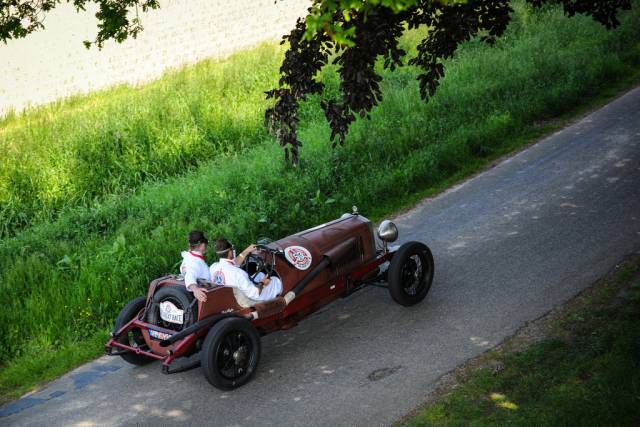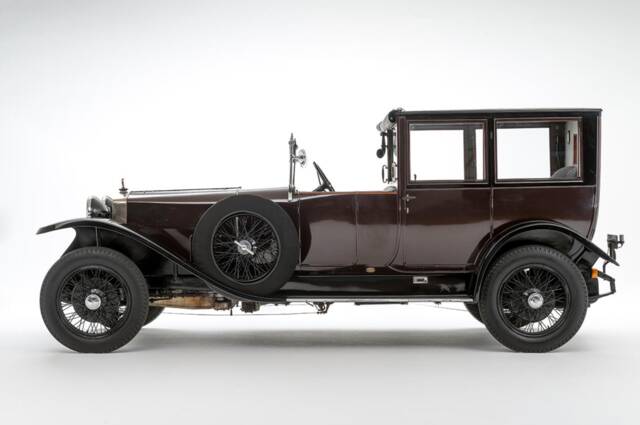- Car
- Alfa Romeo
- Alfa Romeo RL (1 offer)
Alfa Romeo RL classic cars for sale
The Alfa Romeo RL, built from 1922 to 1927, marked the brand’s entry into sports car manufacturing after the First World War. With its straight-six engine and lightweight chassis, the RL is noted as a foundation stone in the evolution of Alfa Romeo’s dynamic image and competition success.
Search results

Alfa Romeo RL listing references from Classic Trader
Below you will find listings related to your search that are no longer available on Classic Trader. Use this information to gain insight into availability, value trends, and current pricing for a "Alfa Romeo RL" to make a more informed purchasing decision.

1924 | Alfa Romeo RL Normale
Incredibly original, "time-warp", one-off Alfa Romeo RL
History of the Alfa Romeo RL
The Alfa Romeo RL emerged in a landscape of post-war transformation, as Alfa Romeo returned from producing military equipment during World War I to its roots in civilian automobile production. Designed by Giuseppe Merosi, the RL was presented on 13 October 1921 and announced worldwide at the London Motor Show that same year. This model represented an essential new direction for Alfa Romeo, targeting the sporting market and responding to changing Grand Prix regulations that favoured smaller engine displacements. As a result, the RL became deeply intertwined with motorsport achievements, including Alfa’s first Targa Florio victory in 1923, which led to the debut of the now-famous Quadrifoglio symbol on competition cars.
Model History
The RL series was offered in several distinct variants: Normale, Turismo, Sport, Super Sport, and the competition-focused RL Targa Florio. Production ran from 1922 to 1927, with a total of 2,640 units manufactured. Earlier units were sometimes delivered as bare chassis to be bodied according to the buyer’s specification, especially for export markets. Highlights in its career include competitive racing success and a strong association with some of Italy’s leading drivers, such as Ugo Sivocci, Antonio Ascari, Enzo Ferrari, and Giuseppe Campari. Its successor, in terms of taking Alfa Romeo further into motorsport, was the 6C 1500.
Highlights of the Alfa Romeo RL
The RL distinguished itself through early adoption of a straight-six OHV engine, available in both touring and sporting configurations. It was the first Alfa Romeo model to wear the Quadrifoglio, which premiered at the 1923 Targa Florio. The car was designed for motorsport at a time when Alfa Romeo was seeking to re-establish itself and accelerate sales through competitive excellence. Its lightweight steel chassis contributed to agile handling and engaging driving characteristics.
Technical Data
Special Editions and Collectible Models
Notable configurations within the RL range include the RL Sport, RL Super Sport, and especially the RL Targa Florio, which was purpose-built for competition and celebrated for its 1923 Targa Florio win. The Targa Florio model is distinguishable by its uprated engine, sporting bodywork, and historical significance due to its documented race victories.
Engine, Performance, Transmission and Handling
With its combination of a lightweight chassis and straight-six powerplant, the RL delivers spirited dynamics for its era. Drivers reported engaging handling, especially in the sportier models. The RL TF could manage remarkable speeds for early 1920s standards: at the Circuito di Cremona in 1923, it averaged 157 km/h over 10 km, later beaten with a 178 km/h average in 1924 by an upgraded RL. The RL’s driving experience was further enhanced from 1923 with the adoption of front brakes, improving stopping power for high-speed runs. Its rear-wheel drive and reliable gearbox made it suitable for road and track alike. Key models include:
- RL Sport – Tweaked for improved performance and distinctive sporting touches.
- RL Super Sport – More powerful and rarer, favoured for competition.
- RL Targa Florio – Directly associated with Alfa Romeo’s motorsport breakthroughs, combining lightweight construction and a high-output engine.
Interior, Comfort, Exterior and Design
As was customary in the 1920s, most RLs left the factory as rolling chassis and were bodied by specialist coachbuilders according to client taste and local tastes. As a result, designs range from open two-seaters to elegant four-door tourers. Notable features include wooden dashboards, leather-trimmed interiors, and period-accurate instrumentation. From 1923, several cars received updated front axles to incorporate front brakes. Special editions, like the Targa Florio, were typically equipped with minimal, purposeful bodywork to keep weight low. The RL family is recognisable by its upright grille and the presence—on competition models—of the original Quadrifoglio, establishing a visual cue still used on Alfa racing cars today.
Other features
The RL’s chassis numbers and matching components (such as the engine, steering, gearbox, and rear axle) are considered vital to collectors. Vehicles with correct, matching serials command greater interest for their authenticity. Due to the RL’s export history, many surviving examples show bespoke coachwork, making each car unique in configuration and detailing.
Summary
Produced between 1922 and 1927, the Alfa Romeo RL is a landmark in early sports car history, combining technical innovation, successful motorsport participation, and elegant period design. Scarce in number and significant in Alfa Romeo lore, the RL demands attention from marque enthusiasts and collectors seeking originality and competition pedigree in a pre-war package.
